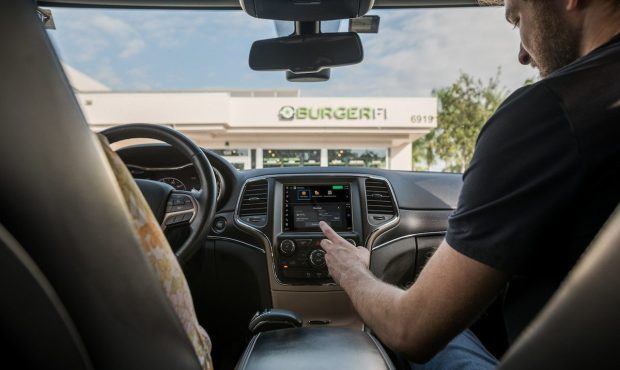BurgerFi Uses in-Car Payments to Feed Fleet Sales

With the emergence of in-vehicle ordering, restaurants have the opportunity to drive large-scale B2B sales.
In an interview with PYMNTS, Karl Goodhew, chief technology officer at fast-casual dining brand BurgerFi, discussed the potential of the technology, which the restaurant unveiled earlier this month in partnership with in-car technology provider Mavi.io at CES.
“One of the big areas of opportunity here with in-car ordering is with fleets,” Goodhew said. “There’s a lot of people who drive around [for work]. They’re pharmacy reps, they’re sales reps, they’re mechanics or delivery drivers, and they have to eat. So, the idea is, [the] expense reports are taken care of automatically [for the employee].”
Given that the technology is designed to be efficient, these businesses that operate fleets would be able to benefit from the time savings relative to other kinds of restaurant orders that drivers could place. The system syncs with cars so that the restaurant has visibility into the car’s geographic location and knows what make, model and color vehicle to look out for, enabling quicker drop off, and customers are charged automatically through their cars’ interfaces, saving time at the point of payment.
The opportunity is sizable. For instance, on a call with analysts in November, DoorDash, the United States’ leading restaurant aggregator, noted that its network of gig drivers includes about 3 million people each quarter.
Meanwhile, competitor Uber, across its ridesharing and delivery business, has even more. The company no longer lists the total number on its site, but in 2019, when the information was public, Uber advertised that it had 3.9 million drivers around the world, according to LinkedIn News.
Plus, these companies are interested in offering food-based rewards to boost hiring and retention. DoorDash offers drivers discounted DashPass memberships and Uber, for its part, promises food from McDonald’s as a performance-based driver perk.
Of course, for the B2B offering to be an attractive one for customers, restaurants need to execute on the promise of time savings.
“You have to control it as much as you can until the handoff, and that means really maximizing the opportunity to deliver fast, fresh food at the right time,” Goodhew said.
The sales bump that could come from these kinds of partnerships could be especially useful for restaurants now, as B2C digital sales flatline. Research from PYMNTS study “12 Months of the ConnectedEconomy™: 33,000 Consumers on Digital’s Role in Their Everyday Lives,” noted that ordering via restaurants’ direct digital channels — their apps and websites — has held relatively constant in the past year.
BurgerFi, for its part, has been ready to go live with in-car ordering for some time, initially announcing it over a year ago, but the restaurant chain and its technology partner have been waiting on dealers and manufacturers. The system will be integrated into this year’s car models.
The burger chain is not the only brand to tap this technology. Fast-casual chain Panera Bread, which has more than 2,100 bakery-cafes in the U.S. and Canada, is doing the same. In September, the company announced a partnership with Apple’s CarPlay. The move enables iPhone users who are members of Panera’s MyPanera loyalty program to order via the fast-casual brand’s app, and the brand’s Unlimited Sip Club subscription holders are able to redeem their beverages through their car’s dashboard with CarPlay.
Goodhew predicted that this kind of technology will become universal but that it will take a while to catch on.
“First of all, you’ve got to have a brand-new car, so that’s a pretty high hurdle [to adoption],” he said. “I think that like anything — airbags, seatbelts, Bluetooth, Apple CarPlay and everything else — it’ll come over time. And while there may not be many customers year one, over time, as this technology becomes more pervasive, [it’ll] become something that’s expected.”